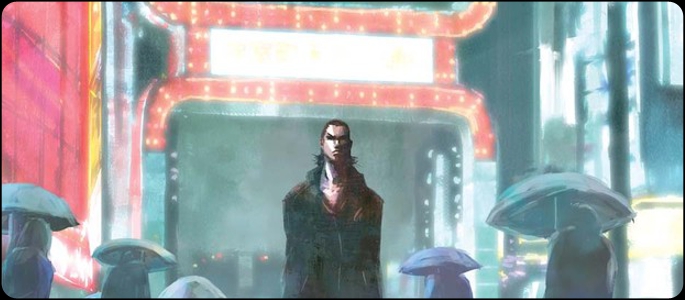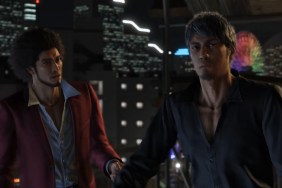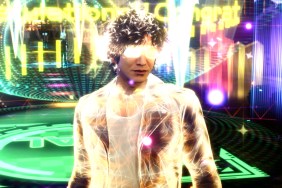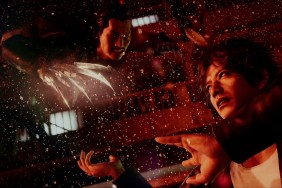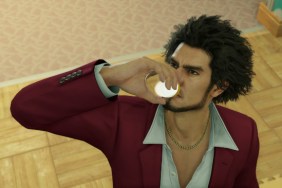Having had tremendous success in Japan and even a spot of praise and profit from across the sea, the Yakuza series went from consoles to handheld with Kurohyou: Ryu Ga Gotoku Shin Shou (Black Panther: Yakuza New Chapter) for PlayStation Portable.
Rather than focusing on Kazuma Kiryu, Black Panther: Yakuza New Chapter tells the story of Tatsuya Ukyou. It’s a stark contrast from what we’re used to; Kiryu is a Certified Public Badass (CPB) who refuses to take crap from anyone and has the connections, money, smarts, and fighting skills to threaten all challengers, whereas Tatsuya is only 18 and pretty much without an ally in the world. Our boy is a hothead, seemingly always looking for a fight. He didn’t come from the best upbringing and before the game gets into full swing, players will learn that his temper and violent antics got him expelled from his high school and subsequently sent to juvenile hall. These did little reform Tatsuya’s attitude, and he’s been getting a bit of a reputation in Kamurocho.
In the first minutes of the game, Tatsuya bites off more than he can chew by messing with the wrong people. I guess he didn’t learn anything from the film The Departed when it taught us something of organized crime: “there are guys you can hit, and there’s guys you can’t.”
Being physically tough doesn’t make one kid who barely started shaving into a match for the type of mob bosses he pisses off, and Tatsuya is therefore at their mercy (though you wouldn’t guess it by the rough tone he still uses when talking to them). The players’ adventure will be one of watching Tatsuya go about his days in Kamurocho while being made to cage fight in the underground MMA matches run by powerful yakuza.
Fighting in Kurohyou is a pleasure. The same basic system is in place that most Yakuza games have used, but the player gets to customize Tatsuya’s fighting style a lot more than they could in previous games. After every fight, Tatsuya earns general EXP and style points, which can be used to level up certain fighting styles such as boxing, judo, jiu-jitsu, muay thai, and so on. Some are much more useful than others against certain opponents, but the possibility exists for a player to make Tatsuya into a wrecking ball with one or two styles heavily preferred over others. Think like something of a Royce Gracie back in the 90’s, how he had virtually no kickboxing skills to threaten anyone, but if he got a hold of someone, the fight was basically over. Likewise, one can meld Tatsuya to be a well-rounded fighter or sacrifice a few points in one area to really excel in another — a grappling artist with mediocre striking, or a one-punch-KO striker who has trouble on the ground. Whatever path is chosen, it’s pretty darn fun to think about how to go about it, then develop Tatsuya accordingly. As always, the heat actions are fun to watch.
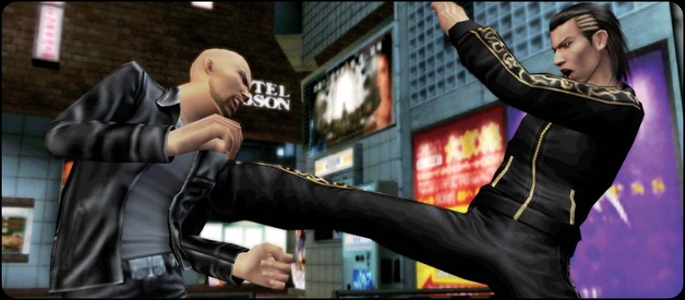
At first I was thrown by how much the street fights can vary in difficulty, but upon reconsideration, I have to give a nod to realism. I mean really, some punks on any given street might very well be weaklings that take 10 seconds to dismantle, whereas others can in reality be unexpectedly dangerous. The expected end of things, however, has the cage fights being considerably harder than the street thugs; think of them as boss battles. Makes sense for trained semi-pro fighters to be harder challenges that random troublemakers, right? So while games are by no means expected to be realistic in every single aspect, Kurohyou scores a nice point there.
Mario taught us that genius can come from having to modify a game to bring it down to the specs of its medium or hardware. Being a PSP installment of a series that had previously been on PS2 and PS3, definite cuts had to be made, and an area where Black Panther sees great success in this is the story segments. Unable to pack in CG segments to rival PS3, Sega went with some hand-drawn scenes. Largely still frames will see movement as if on strings, a lot of scenes looking like a comic book came to life. These are not to be confused with a fully animated sequence, but rather, we’ll see something like a still picture of a big dude, then a cut to Tatsuya, then a cut back to the big guy with a stunned expression and Tatsuya’s fist under his chin. Nothing about the drawings themselves will change, but we’ll see his head moving slowly upwards, obviously powered by our hero’s uppercut. Or perhaps in an alternate scene, we’ll see a madman laughing maniacally, his arms outstretched; nothing will change, but his arms will be kinda moving up and down like someone made a cardboard cutout with moveable arms. It’s clearly lower tech and not for everyone, but the type of art within the scenes is something the series hasn’t used before, and more importantly, it’s done well. It tells the story admirably and looks good doing so.
A more difficult challenge in hardware inferiority was posed by the camera, however. Kamurocho is not only much smaller this time around, the camera angles are entirely fixed. Unchanging camera angles are fine, but the problem arises in the inconsistency. First, we’ll see Tatsuya running, for example, from right to left. Then two seconds later, the camera changes to an overhead shot, meaning the player needs to be moving the analog stick up instead of left. A mere three or four seconds later, it happens again, as the camera moves to an isometric shot in which the player must move Tatsuya down and to the right. The areas are incredibly small, meaning camera changes are frequent; since they happen instantly and can require the player to move in the complete opposite direction, this can be quite jarring, especially during chase scenes. Running from the police can be tough, not because of a tricky obstacle course, but because the player is battling the on-screen enemies while the camera proves to be an extra opponent. Accidental backtracking will happen quite a bit, which proves frustrating enough during regular navigation, but especially so when the current story task requires Tatsuya to evade pursuers.
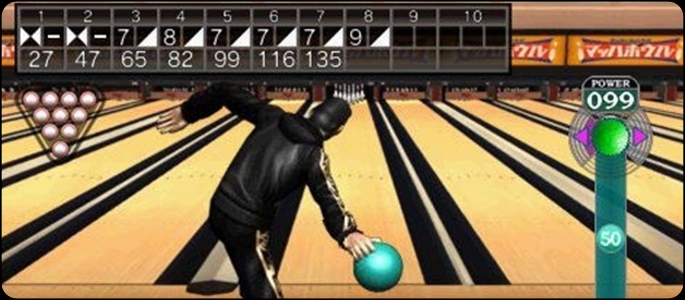
Black Panther is aptly named, because its visuals are quite dark. As a side story or “new chapter” with a focus shifted toward the underworld whose existence most people don’t like to acknowledge, the color palette isn’t just well chosen, it’s symbolic of the game’s theme.
When walking about it in Tokyo’s fictional district of Kamurocho, the popular focal point of this series, it’s constantly night time. Again, “Black” Panther symbolism keeps piling up. The city is lit by street lamps and neon lights which look OK from a distance, but from mid-to-close range, they look way too fuzzy. You have to make some cuts to work around technological limitations, and doing this craftily is one thing that made the first Mario games so great, but when the cuts start to have obvious drawbacks like this, it’s time to rethink a few things. At least in the areas that matter most — combat and storytelling — the visuals do the job.
Kamurocho isn’t nearly as fun to explore in Black Panther as it has been in the past, but it largely makes up for that loss by featuring some of the most fun combat in the series and bringing a unique storytelling method to the table. The smaller medium may not allow for quite the depth PS3 gamers are used to, but as a portable not being unfairly yet inevitably compared to the most powerful console on the market today, it offers a fine amount of fun, and the classic Yakuza minigames are great for gaming on the go. Japanese comprehension is sadly a requirement for anyone wanting to know what’s going on in the story or how to do anything in the interface, so importers take note, as Sega has shown no interest in bringing this title outside of Japan.
PlayStation LifeStyle’s Final Score
+ Pacing done just perfectly for a portable. – Jarring camera changes every three seconds when in the streets +/- Visuals so great in battle, story, and minigames yet so blurry during exploration |
 |
–
